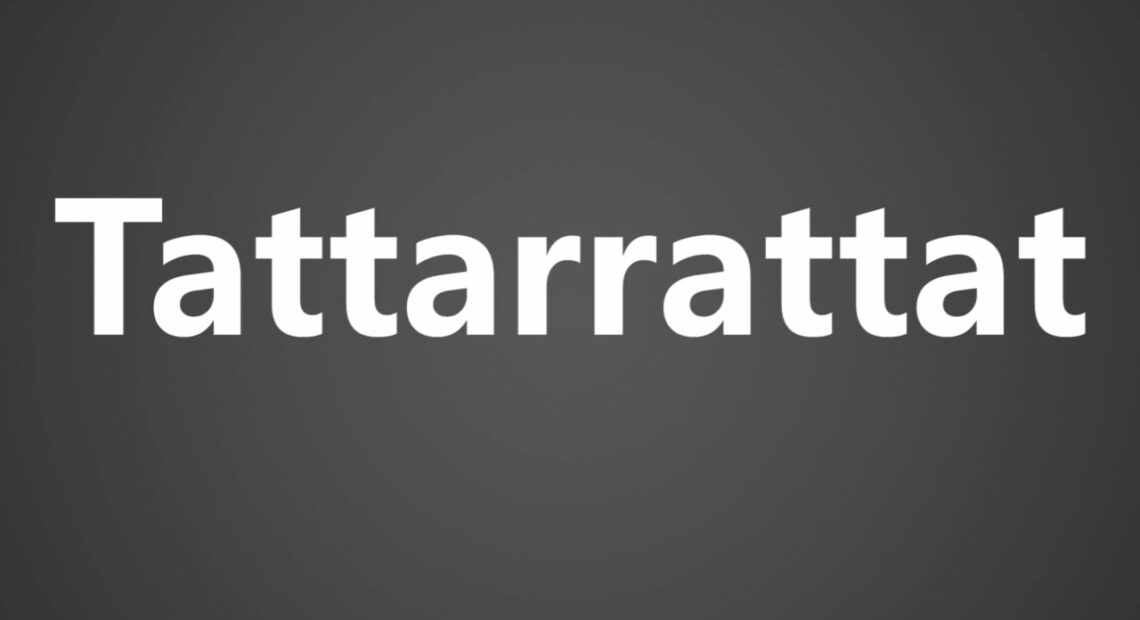The Power of Language: Exploring the Enigmatic Word “TATTARRATTAT” in James Joyce’s “Ulysses”

Language has an incredible ability to captivate and confound, to shape our perceptions and evoke emotions. In the realm of literature, authors have often pushed the boundaries of language, employing inventive words that challenge our understanding and ignite our imagination. One such word is “TATTARRATTAT,” a peculiar creation found in James Joyce’s masterpiece, “Ulysses.” In this blog post, we will delve into the significance of this enigmatic word, exploring its context within the novel and its broader implications in the realm of language.
The Birth of TATTARRATTAT: Within the pages of “Ulysses,” James Joyce introduces “TATTARRATTAT” in the “Cyclops” episode, using it to depict the sound of a knock on the door. The word itself is an onomatopoeic representation, emphasizing the repetitive and mundane nature of the characters’ actions. Through this invented word, Joyce captures the essence of the human experience, highlighting the monotony and insignificance of daily rituals.
The Intricacies of Language: Joyce’s use of “TATTARRATTAT” invites readers to reflect on the power of language itself. Words are vessels of meaning, and the author’s ability to create new ones expands the boundaries of expression. “TATTARRATTAT” demonstrates that language is not limited to preexisting vocabulary; it can be shaped and molded to suit the author’s purpose. In this way, Joyce challenges conventional linguistic norms and encourages us to question the limits we impose on language.
The Evocative Nature of Onomatopoeia: Onomatopoeia, the formation of words that imitate sounds, has long been employed by authors to add depth and texture to their writing. “TATTARRATTAT” exemplifies the evocative power of onomatopoeia, as it not only mimics the sound of a knock but also creates a visual and auditory experience within the reader’s mind. The word’s unconventional construction draws attention to the sound itself, prompting us to listen more closely to the world around us and appreciate the nuances of everyday noises.
Interpretations and Contemplations: While “TATTARRATTAT” serves a specific purpose within the context of “Ulysses,” its meaning remains open to interpretation. Some readers may see it as a metaphorical representation of persistence or urgency, as the relentless knocking mirrors the characters’ relentless pursuit of their desires. Others may find symbolic significance in the word’s rhythmic repetition, suggesting the cyclical nature of life or the futility of certain actions.
Beyond “Ulysses”: Despite its origins in “Ulysses,” “TATTARRATTAT” has transcended the confines of Joyce’s novel and has become a symbol of linguistic creativity. Its inclusion in the literary canon has sparked fascination and intrigue, drawing attention to the potential of language to surprise, challenge, and delight. It serves as a reminder that literature, with its innovative use of words, has the power to reshape our understanding of communication and expand the boundaries of linguistic expression.
In the realm of literature, few words possess the enigmatic charm of “TATTARRATTAT.” James Joyce’s creation has become a testament to the malleability of language and the ability of authors to craft new worlds through inventive vocabulary. As readers and writers, we are invited to embrace the endless possibilities of language, to explore the uncharted territories of expression, and to appreciate the profound impact that a single word can have on our understanding of the human experience.
Language, like “TATTARRATTAT,” remains an ever-evolving entity, waiting to be discovered and reimagined. Let us embrace its complexities, celebrate its creativity, and revel in the magic of words.
Picture Courtesy: Google/images are subject to copyright








